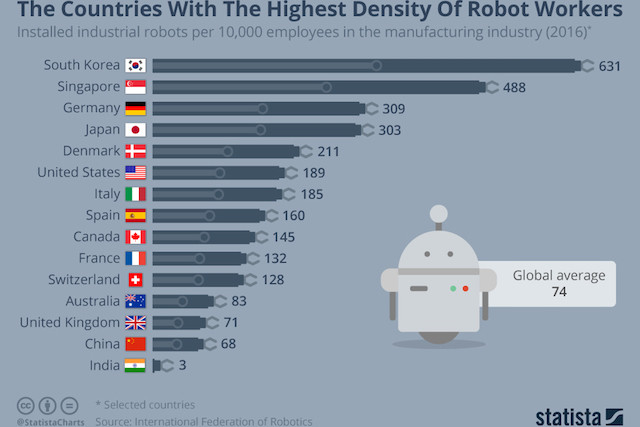Data from the International Federation of Robotics reveals that the pace of industrial automation is accelerating across much of the developed world with 66 installed industrial robots per 10,000 employees globally in 2015. A year later, that increased to 74.
Europe has a robot density of 99 units per 10,000 workers and that number is 84 and 63 in the Americas and Asia respectively. China is one of the countries recording the highest growth levels in industrial automation but nowhere has a robot density like South Korea.
In 2016, South Korea had 631 installed industrial robots per 10,000 employees. That is mainly due to the contiued installation of high volume robots in the electronics and manufacturing sectors. 90 percent of Singapore’s industrial robots are installed in its electronics industry and it comes second with a density of 488 per 10,000 employees.
Germany and Japan are renowned for their automotive industries and they have density levels of just over 300 per 10,000 workers. Interestingly, Japan is one of the main players in industrial robotics, accounting for 52 percent of global supply.
In the United States, the pace of automation is slower with a density rate of 189. China is eager to expand its level of automation in the coming years, targeting a place in the world's top-10 nations for robot density by 2020. It had a density rate of 25 units in 2013 and that grew to 68 by 2016. India is still lagging behind other countries in automation and it has only three industrial robots per 10,000 workers in 2016.
